
A home is so much more than just a place where you live
For over 10 years, Jane and her family have lived in their Edwardian semi-detached home in North Oxford. Built in 1910, the house has a striking design with solid walls and suspended timber floors. Over the years, the house has been modified to include a kitchen extension, a conservatory, and solar panels on the roof.
Yet, despite these changes, the house remained draughty, with cold spots making some rooms unwelcoming. Jane, who works from home, endured a freezing study for years. More than anything, she wanted to make her home warmer and more comfortable for her family while also reducing its energy demand and moving away from fossil fuels.
Determined to make a change, she turned to Cosy Homes Oxfordshire to upgrade insulation, improve ventilation, and install a heat pump – transforming the comfort of her home while cutting carbon.
As an active member of Low Carbon Oxford North (LCON), Jane has long been passionate about home energy efficiency. She helped to create LCON’s Housewarming Guides – designed to demystify the retrofit process by transforming the technical language into something that could be clearly understood by everyone. These were inspired by her own questions and research, as she went through the process to decide what to do with her home.
“A home is so much more than just a place where you live.” Jane Grindey
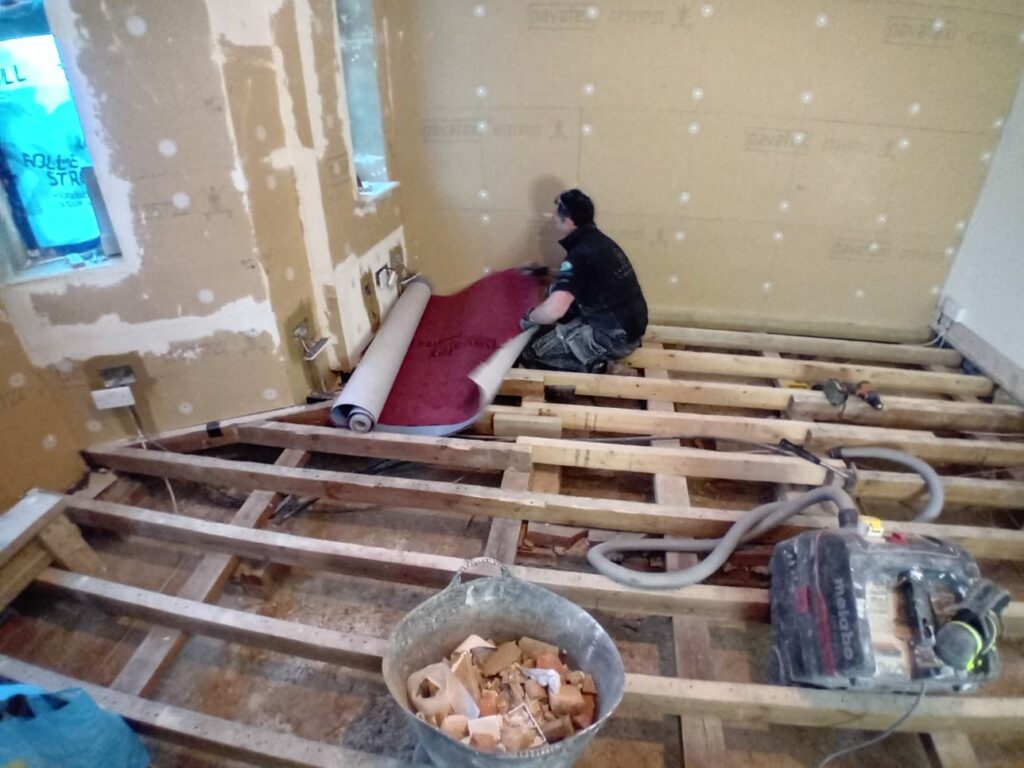
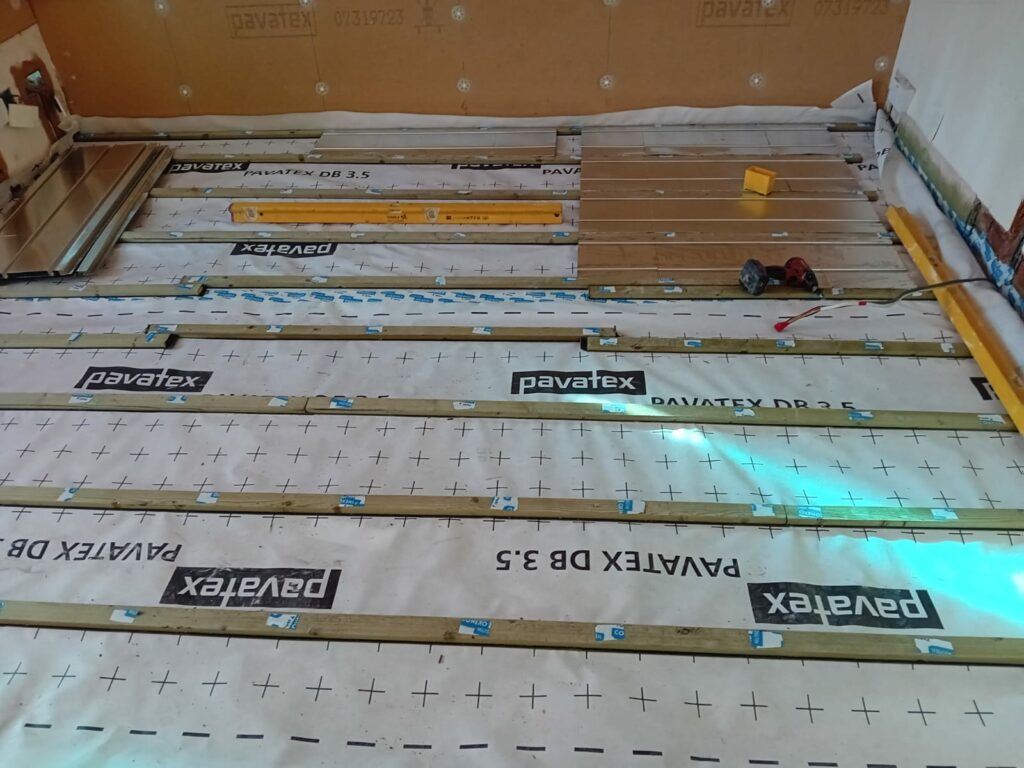
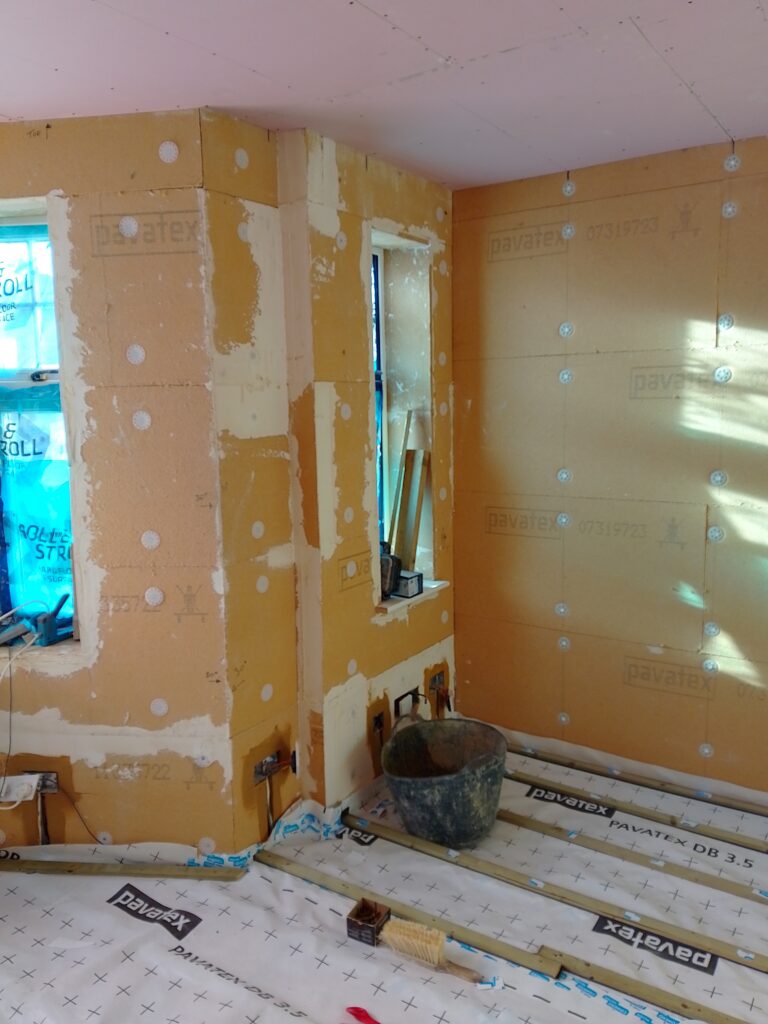
A holistic, fabric-first approach
After careful consideration, Jane chose to work with Cosy Homes Oxfordshire, drawn to our whole-house, fabric-first approach. We carried out a home energy assessment and created a bespoke Whole House Plan, setting out a clear roadmap for making her home as energy efficient as possible.
The plan recommended a phased approach, starting with insulation and ventilation improvements in preparation for installing a heat pump. Key measures included:
- Internal wall insulation on all external walls in the study, downstairs reception room, sitting room and main bedroom.
- Suspended timber floor insulation with underfloor heating in the sitting room.
- A new triple-glazed window and a new draught-proof door.
- Demand control ventilation throughout the house, including the kitchen and bathrooms.
- An air source heat pump, installed outside the kitchen and conservatory.
Jane worked closely with her Retrofit Coordinator, selecting the most impactful measures while staying within budget. She found reassurance in the structured approach, knowing each step was carried out in the right sequence and to the highest quality standards.
Immediate impact
One of Jane’s top priorities was tackling the extreme cold in her home office. By adding wood fibre insulation to the internal walls, she felt the difference instantly and said she could feel the room getting warmer as the wood fibre insulation was applied.

“My study was freezing cold, but now it’s the warmest room in the house!”
With poorly uninsulated homes losing up to 35% of their heat through the walls, internal insulation was applied to the sitting room, the reception room, the main bedroom and the study , making the whole house noticeably warmer.
Underfloor insulation was installed in the first-floor bedrooms and the sitting room ceiling. The suspended wooden floor in the sitting room was also insulated, with underfloor heating added, significantly improving the warmth of the room.
Underfloor heating works particularly well with a heat pump, as it provides a large surface area to emit low-temperature heat efficiently.
With improved insulation came the need for effective ventilation to remove stale air and prevent moisture build-up. Demand control ventilation (DCV) was fitted throughout the house to maintain fresh air while minimising unnecessary heat loss.
Taking the plunge on a heat pump
Initially, Jane planned to install an air source heat pump in a later phase. But after experiencing the disruption of insulation works, she decided to go ahead with it straight away to avoid further upheaval.
Drawing on her knowledge from the Housewarming Guides, she chose a sleek Italian heat pump, which was installed outside the kitchen by an independent specialist company. The system runs efficiently – for every unit of electricity used to power the air source heat pump, it produces 3 to 3.5 units of heat – providing steady warmth by circulating heated water through the radiators.
Jane benefitted from the Boiler Upgrade Scheme, a government funded grant designed to help homeowners with the cost of installing a heat pump.
To maximise efficiency, one radiator in the family room was replaced with a significantly larger model. The nearby window was upgraded to triple glazing, and Jane could not believe the difference: it made
“I can’t tell you the joy of a triple-glazed window!”
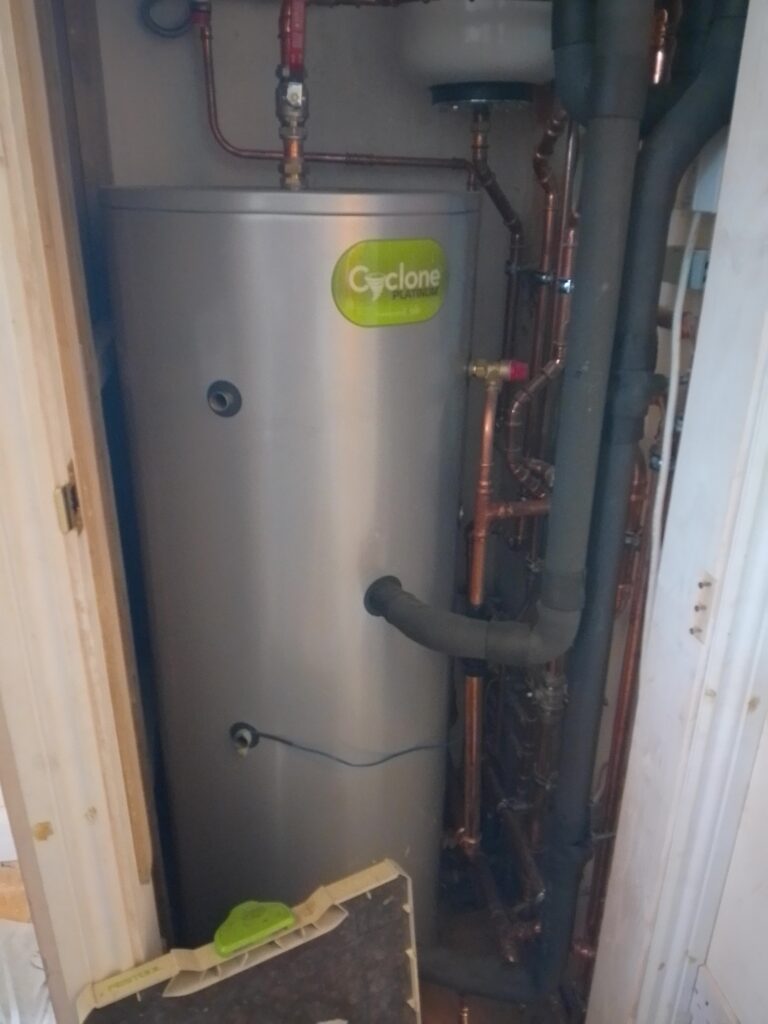
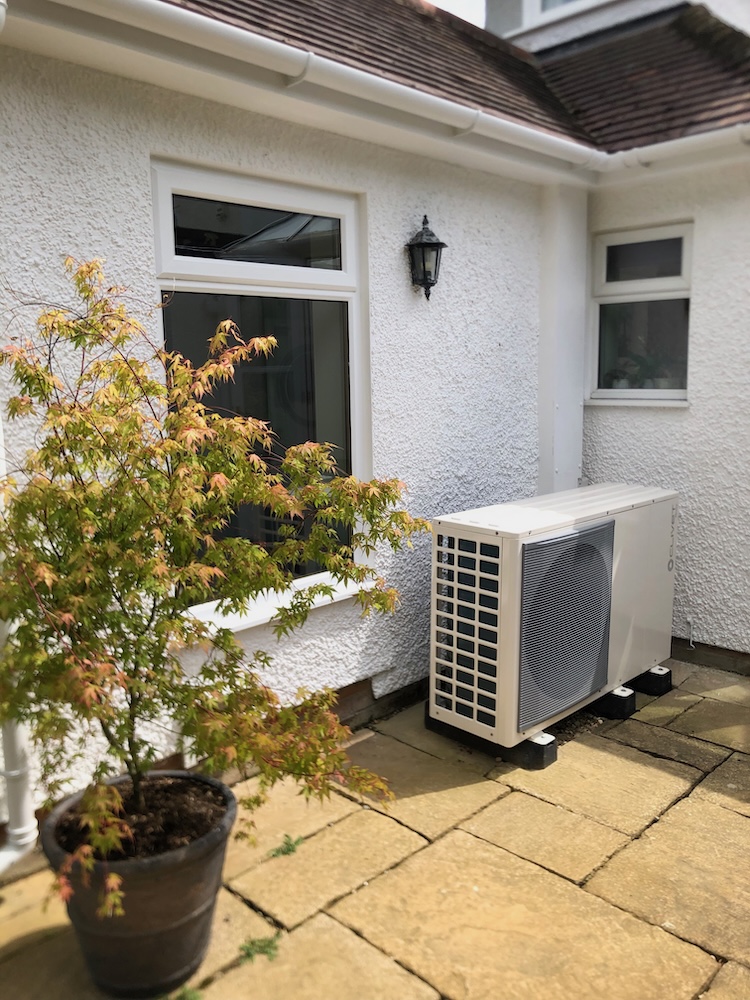
Sharing knowledge and inspiring others
While the process was dusty, and disruptive, Jane is clear that the end result has been worth it. Her home is now warmer, more comfortable, and far more energy efficient.
As a strong believer in community knowledge-sharing, she has opened her home to visitors as part of Energy Saving Homes, a Low Carbon Hub Community Grant funded project, at Oxford Open Doors 2024. She plans to do the same again at Oxford Open Doors 2025, in partnership with the Oxford Preservation Trust, helping to inspire others on their own retrofit journey.
Jane’s story is a brilliant example of how a well-planned retrofit can transform a home, making it warmer, greener, and future-proofed for years to come.
Feeling inspired to transform your home?
Jane’s journey shows the power of planning ahead. A Whole House Plan helped her take the right steps in the right order – maximising warmth, comfort, and energy efficiency.
Start your retrofit journey today with expert guidance. Our assessment gives you a clear, tailored roadmap to improve your home’s energy efficiency, reduce carbon emissions, and create a cosier, more future-proof home.
